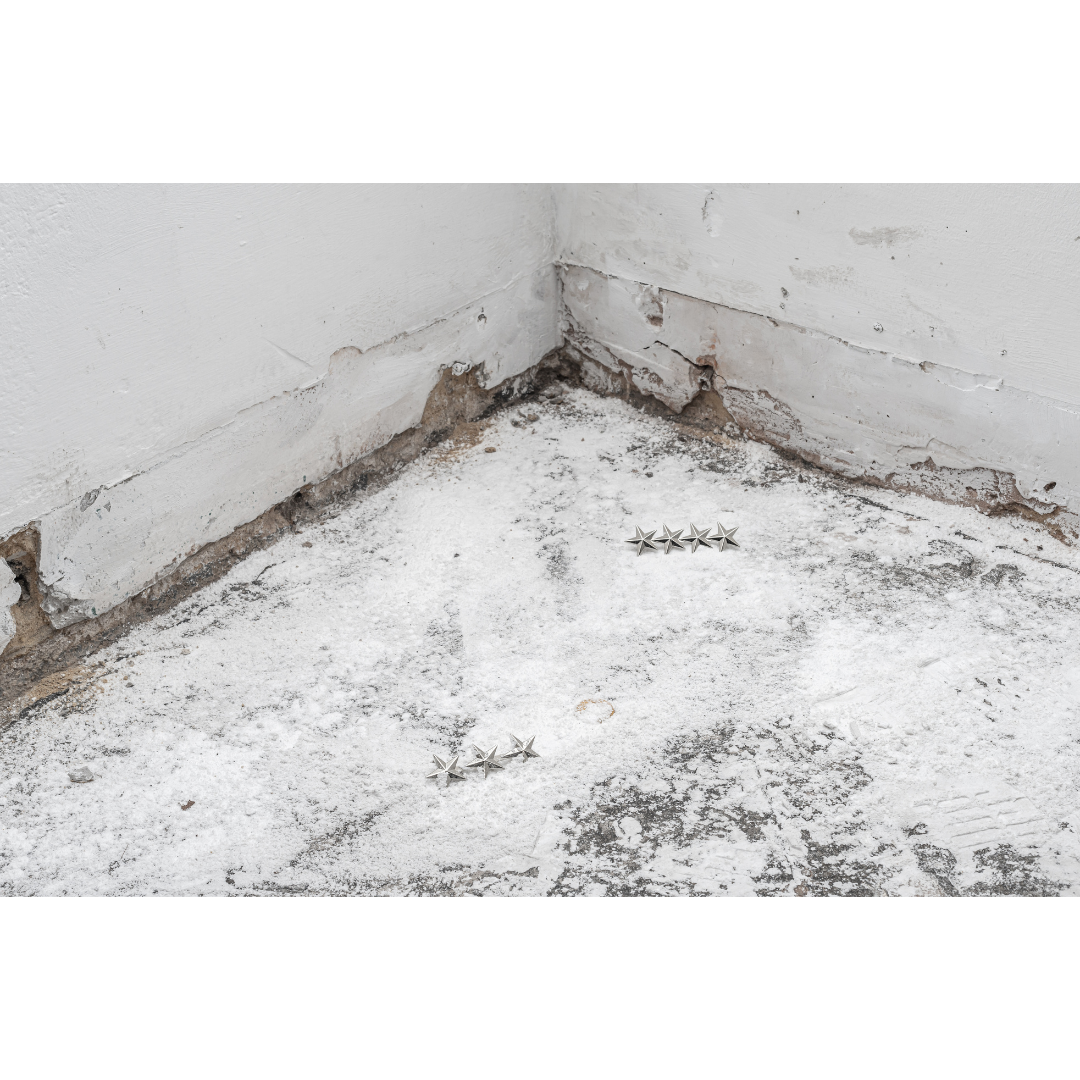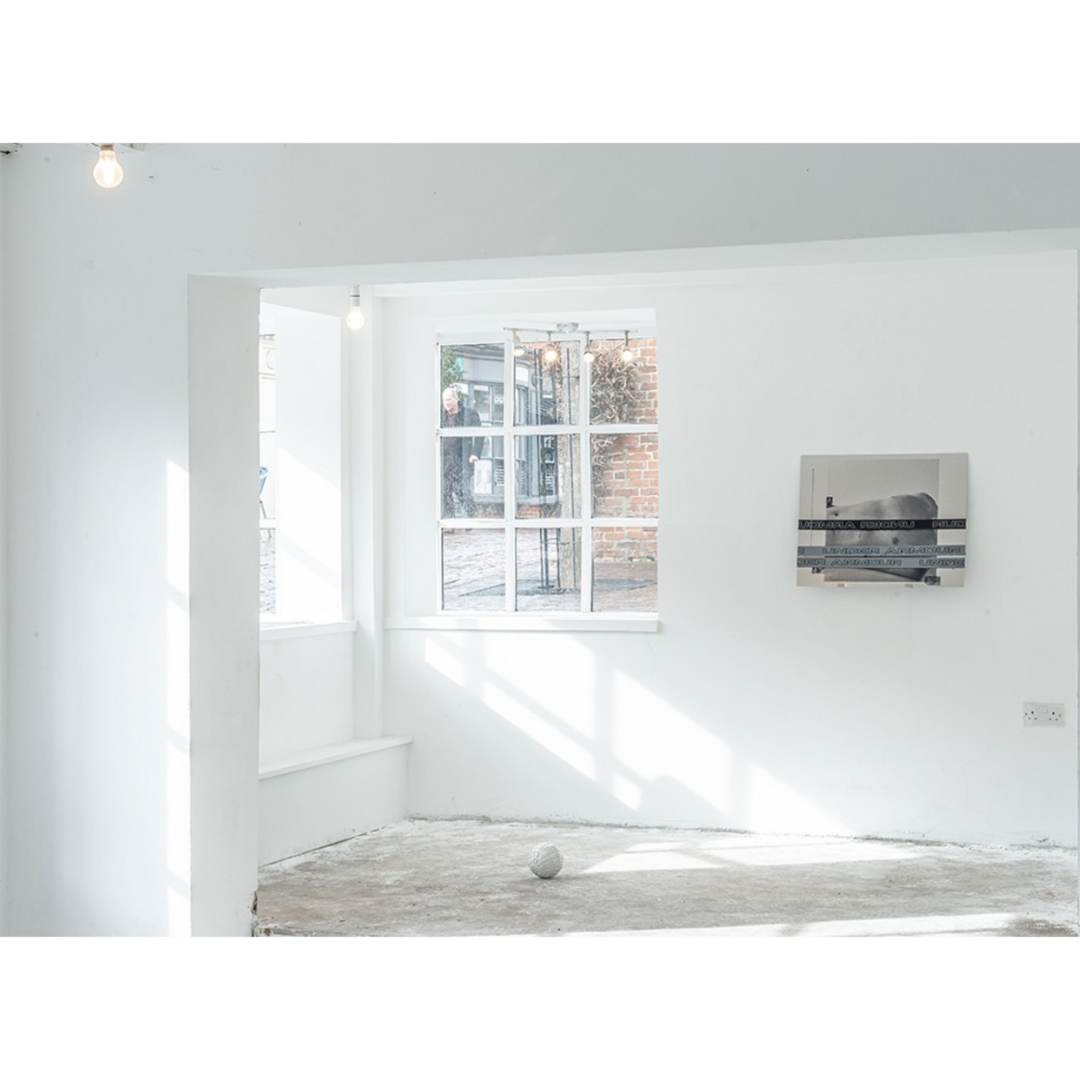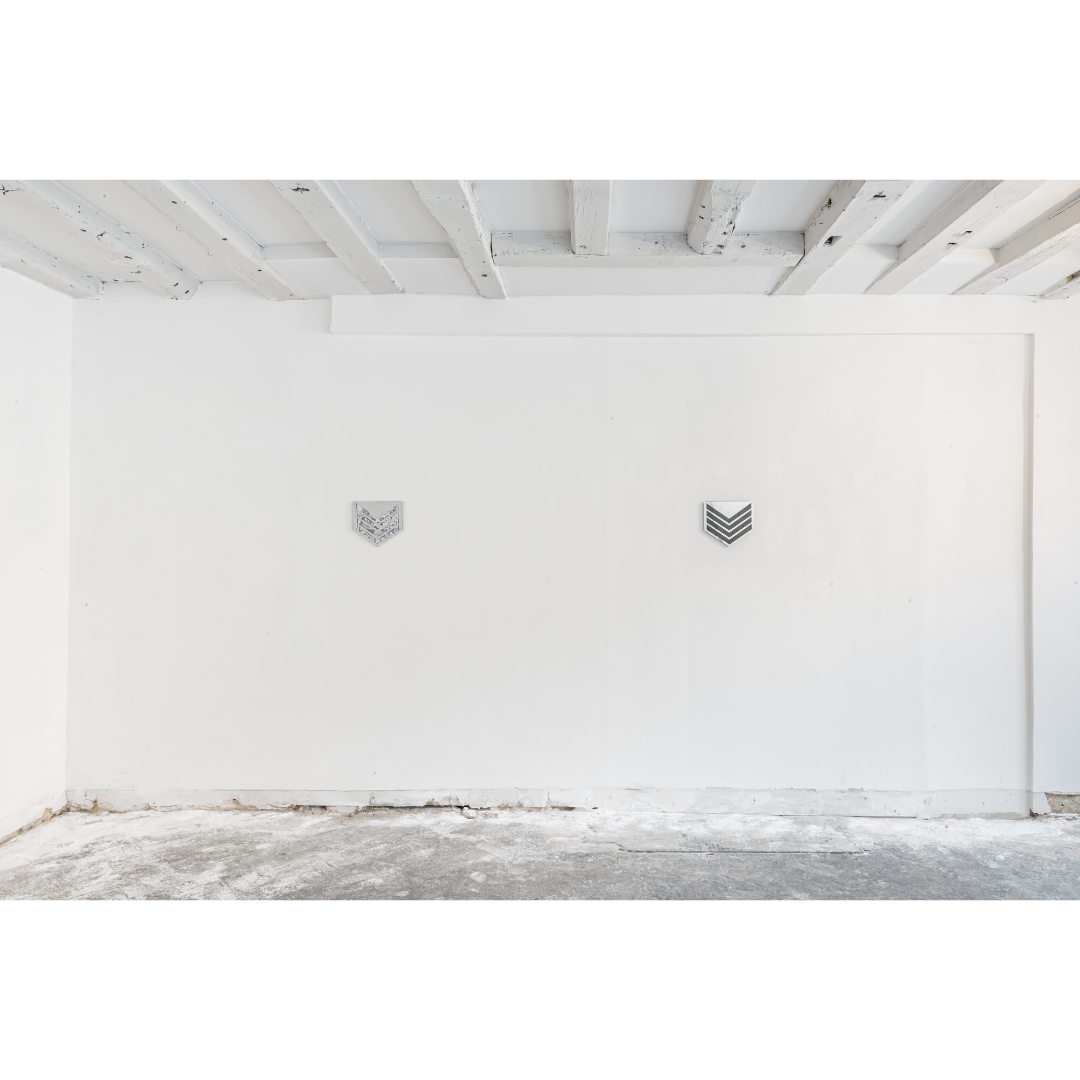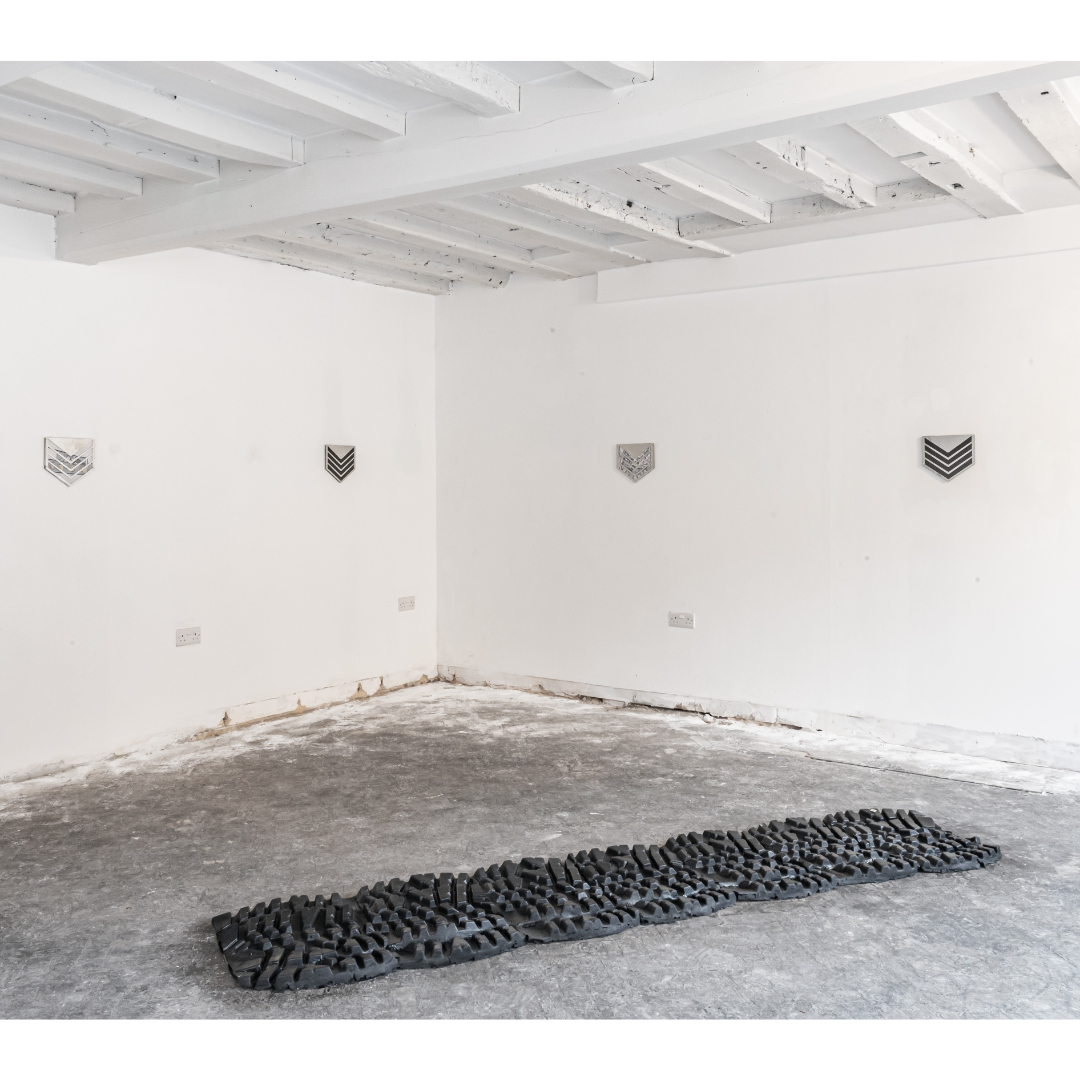







Close Considerations
Austere chromatics: The creatine powder was used to create the monochromatic visual effect of snow. The resulting atmosphere evokes a sense of austere coldness and stoicism of the harsh and dangerous terrains where military exercises are undertaken.
Subtle visual interest: While the creatine powder has a dominant visual presence, the military star pins introduce a visual disruption with their nondescript glimmering.
Semantic counterpoint: The inclusion of military stars within the work also introduces a semantic counterpoint. These stars traditionally symbolise hierarchy and rank. Yet, their subtlety within the dominant presence of the creatine powder suggests, like his other works, a quiet and pervasive and therefore more foreboding quality.




Process
Comparative chromatic properties: Papandreopoulos's selection of creatine was influenced by its distinct chromaticity with a slightly yellowish tinge and crystalline sheen compared to testosterone powder's duller lustre.
Immersive curatorial design: Papandreopoulos's iterative process entailed figuring out the most strategic way to support the "main" works without disturbing their placement. As a supporting work, the installation had to create a conducive environment for the main works, but also not lose their independence as a work in itself.
Intuitional spatial composition: In the resulting straightforward and intuitional work the creatine powder is spread across the floor, with a higher concentration observed in the corners compared to the central area, and within which are interspersed the military star pins in a minimalistic way.




References
Harsh Terrains: Army recruitment campaigns often depict images of harsh landscapes with challenging environments by overcoming which soldiers are moulded into idealised versions of themselves.
Military Attire: Papandreopoulos's work utilises historical uniform reference books and catalogues as a source for the semiotic analysis of military attire across various cultures. This analysis delves into the symbolic meanings embedded in different uniform elements, enabling an exploration of how cultures use clothing to construct and communicate power.
Authoritarian aesthetic discourse: Papandreopoulos’s monumental, banal objects reference the historical practice of using scale to reinforce power. He has mentioned the colossal pharaoh statues of ancient Egypt, where size directly correlated with a ruler's authority, and more recently, collectivist regimes like Nazi Germany and the Soviet Union employed oversized sculptures of idealised bodies, to overwhelm viewers and instil awe, reinforcing the state's supposed invincibility, right to control as well as to direct citizens’ aspirations.
Tom of Finland’s erotic deviance: Papandreopoulos identifies an aesthetic parallel between the exaggerated masculinity depicted by the collectivist regimes of Nazi Germany and the Soviet Union and Tom of Finland's work which directly deals with their sexual appeal, which the former was fundamentally against. Tom of Finland's work utilises extreme versions of masculinity in uniforms, blurring the line between art and pornography. This reference presents masculinity as a potentially transgressive concept as an individualised erotic deviance in its own right.
Military conscription: A lot of Papandreopoulos’s art practice draws influence from his experience in the Greek military. This experience sharpened his observations of symbols used to establish and reinforce hierarchies and power structures. These symbols can be observed in the imposition of stoic aesthetics, adherence to austerity, enforced uniformity, and emphasis on order. Notably, these elements extend beyond the military context, influencing civilian life through state and corporate control mechanisms.
Samuel Beckett’s examination of disoriented masculinity: The exhibition title originated from Samuel Beckett's short story titled "Echo's Bones," which explores themes of violence and manhood. The regimented life depicted in Papandreopoulos's "Echo's Bones" exhibition, mirroring Beckett's characters in Theatre of the Absurd plays, reflects a potential loss of identity. This suggests a parallel between the disorientation experienced by soldiers in a highly structured environment and the struggles faced by contemporary men grappling with traditional notions of masculinity.
Francis Bacon’s examination of power: By analysing the connections between Samuel Beckett's penultimate work and Francis Bacon's late paintings, a link can be established with Papandreopoulos's practice. All three artists explore the nature of masculinity, portraying it as a constantly shifting concept characterised by doubt and complexity. Their work suggests that male identity is not fixed but rather allows for fluidity and the potential for transformation.




